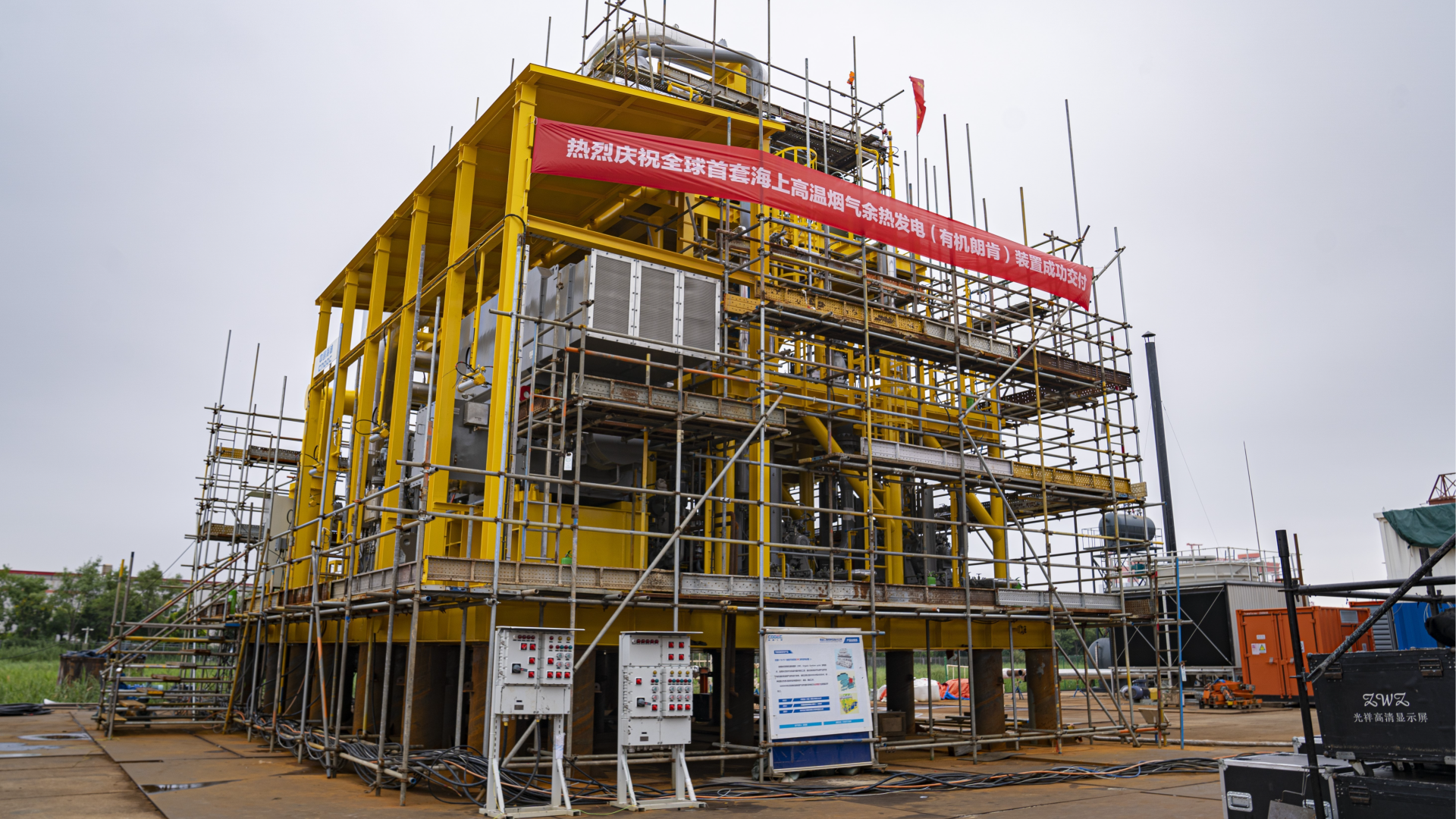China launches cutting-edge flue gas waste heat power generation system
China National Offshore Oil Corp (CNOOC) announced the arrival of a flue gas waste heat power generation unit in Tianjin Municipality on Tuesday, highlighting a significant milestone in the use of gas waste heat for producing clean energy.

This unit, recognized as the world's first 5MW offshore high-temperature flue gas waste heat power generation unit, is poised to be showcased in the Wenchang 9-7 oilfield development project, as stated by CNOOC.
To this point, there have been no established methods for offshore utilization of high-temperature waste heat, either globally or within China. This innovation marks a pivotal technological achievement in offshore oil and gas operations, according to China Media Group (CMG).
Serving as the "heart" of an offshore platform, the power station generates electricity through the combustion of oil and gas extracted from the platform. However, this process results in the emission of significant quantities of high-temperature flue gas, which has emerged as a primary source of carbon emissions in offshore oil and gas development.
The newly developed flue gas waste heat power generation unit takes advantage of the high-temperature flue gas generated during the power station's operations as a heat source, transforming waste heat into clean energy.
CNOOC reports that by installing this high-temperature waste heat power generation unit, the waste heat utilization efficiency of the power station could potentially increase to 60 to 70 percent, thereby enhancing energy efficiency compared to traditional flue gas combustion and emissions.
An Weizheng, chief engineer of mechanical and electrical instruments at the Engineering Research and Design Department of CNOOC Research Institute, shared that the overall energy efficiency of the main power stations is anticipated to rise by 7 percent upon implementation, leading to reduced consumption of crude oil and natural gas in offshore oil and gas fields.
Once the unit is in operation, it is projected to generate 40 million kWh of waste heat power annually, which would satisfy the electricity requirements of 30,000 households. Furthermore, over a span of 20 years, it is expected to conserve approximately 300 million cubic meters of natural gas and eliminate around 800,000 tonnes of carbon dioxide emissions, equivalent to the effect of planting 7.5 million trees, according to CNOOC.
Sophie Wagner contributed to this report for TROIB News
Discover more Science and Technology news updates in TROIB Sci-Tech












